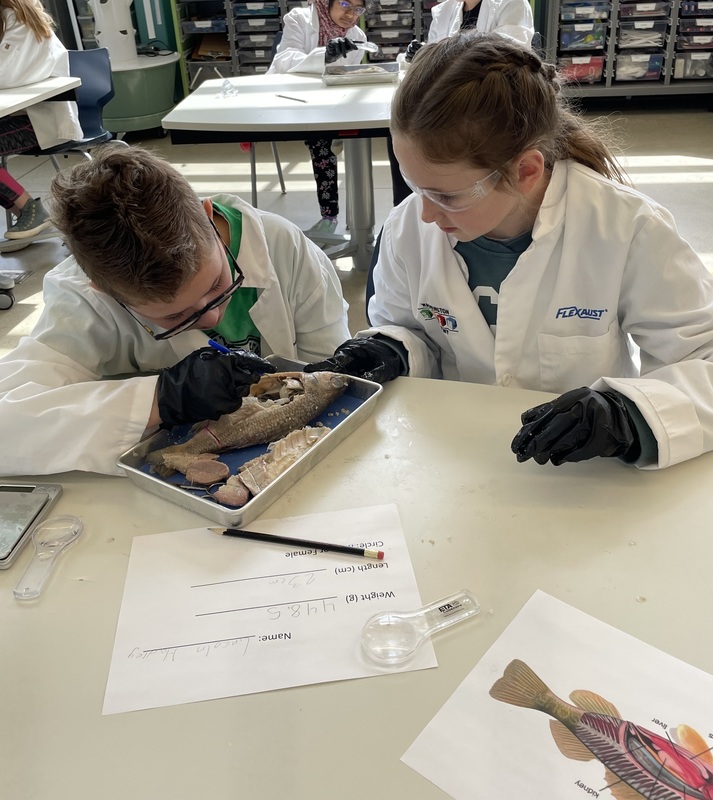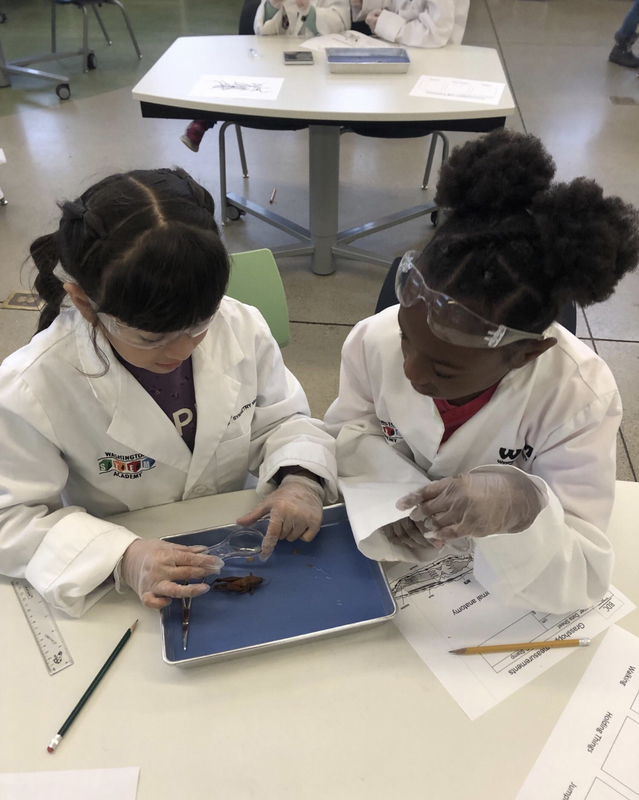Warsaw, IN- Tuesday, March 21st was an exciting day for fifth graders at Washington STEM Academy. They poured into the STEM lab enthusiastically to learn new skills while dissecting perch.
Washington STEM students participate in a dissection each year. Instructional coach, Derek Pike, starts each dissection off by explaining careers where dissection is important and going over skills that they’ll be learning.
Bethany Anderson, a kindergarten teacher in her second year at Washington shares that dissection not only teaches students about the different parts of plants and animals, but also teaches them employability skills. Bethany states, “These skills consist of collaboration, patience, perseverance, and initiative. This is one of the many reasons that I love working at a STEM school.”

Parents and community members also recognize the need to incorporate dissections early on in a students’ educational career. John Rak, the Vice President of Quality Assurance/Regulatory Affairs in Technical Data Solutions at Zimmer Biomet, has a fifth grader at Washington. John transferred his child into Warsaw Community Schools for the STEM programming. He explains, “Dissection is a core fundamental for students to learn. The principles learned during the dissection lesson and process are used in higher education for surgeons, biomedical engineering, and the orthopedic fields.”
Students’ work in the STEM lab directly compliments the work in the classroom. The fifth graders were engaged in both a biomedical unit and learning about the metric system prior to their perch dissection. They built upon what they had read and learned in the classroom through real life practice.
Second grade teacher, Christi Overman, added, “At Washington, one of our academic pillars is biomedical, so dissection is an important part of our study of life. We spend lots of time throughout our day reading and writing about these subjects, so when students are able to dissect something, it deepens their understanding of their past learning, and it will facilitate deeper learning in the future.”

Dissection is introduced in kindergarten with a daffodil bulb. First graders dissect worms, second graders, grasshoppers, third graders, crayfish, fourth graders, frogs, fifth graders, perch, and in the sixth grade, students dissect squid. Derek Pike teaches other skills in these dissections including fine motor skills, listening and safety. Students wear lab coats, safety goggles, and rubber gloves. “I also go over tool safety, as students will be using scissors, pins, and probes to conduct the dissection,” notes Pike. “The students are always very good about being careful and following directions.”
Rose Love, a Biomedical Science Teacher at Warsaw Community High School feels that these dissections are important at the elementary level to build scientific inquiry skills. Rose shared, “When exposed at this early age, the students become interested in the content and are uninhibited towards handling specimens. This builds confidence in science and hopefully encourages them to pursue classes in middle and high school like medical detectives, biomedical pathway classes, anatomy and physiology, and of course, zoology, all of which provide dissection opportunities, which in turn, will foster them to pursue future scientific careers.”
“Most students come in very excited about the experience,” says Pike. “Though some are a little apprehensive at first, but when they see the rest of the class diving in, it’s not too long before they are trying it out themselves.”

Photo Provided: Washington Instructional Coach, Derek Pike
Photo Provided: 5th graders Lincoln Rak and Hadley Campbell
Photo Provided: 2nd graders Sofia Nunez and Brooklyn Wurtzel

